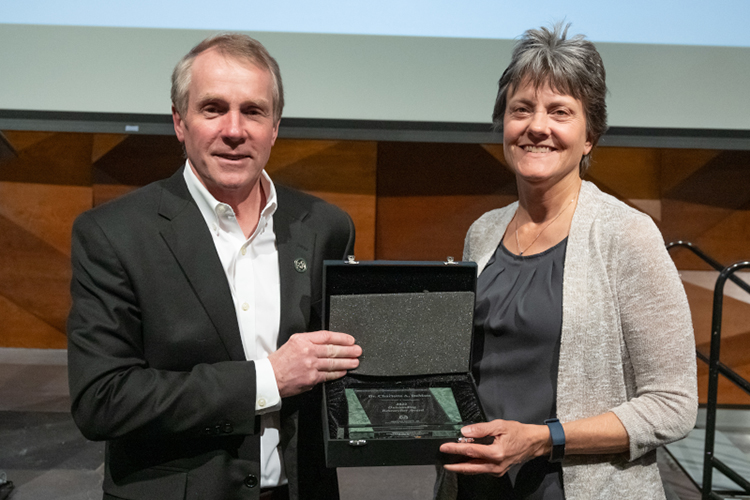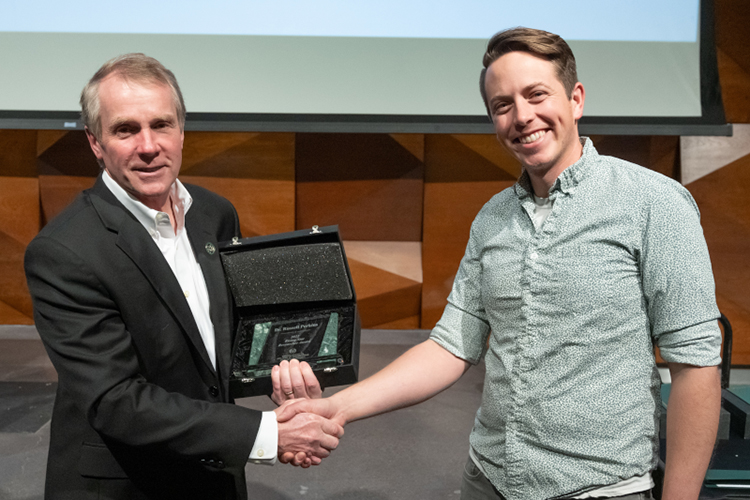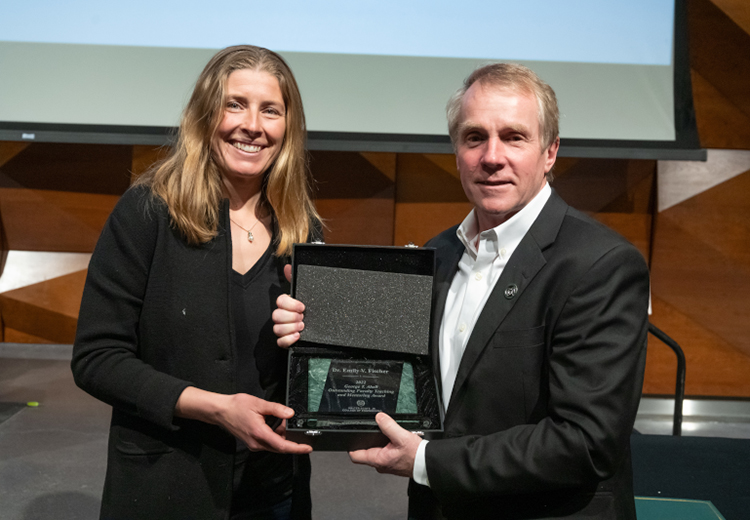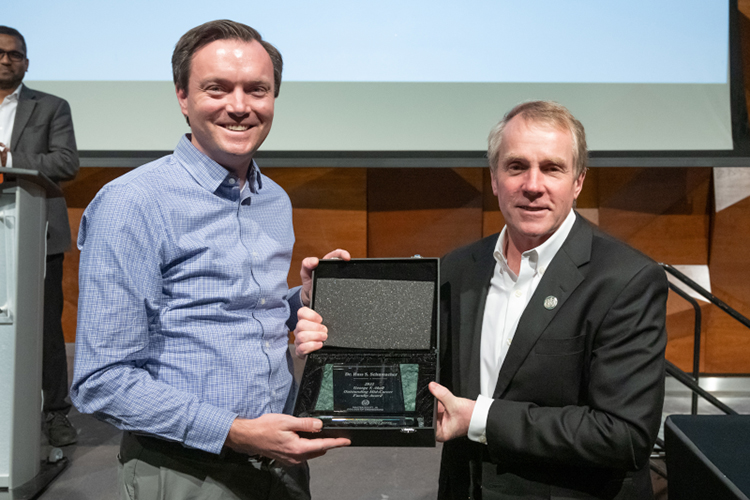Five department members honored with college awards
Five faculty members and researchers from the Department of Atmospheric Science were recognized during the Walter Scott, Jr. College of Engineering All-College Meeting April 26. Nominations were submitted by colleagues and staff of the college’s eight departments and programs.
Outstanding Researcher Award: Charlotte DeMott
“For outstanding research achievements and international leadership in elucidating the role of ocean-atmosphere coupling as a driver of the Madden-Julien Oscillation, improving predictability of high-impact weather phenomena around the globe.”

Outstanding Researcher Award – Rising Star: Russell Perkins
“For outstanding achievements in exploring new and cutting-edge scientific directions, exceptional research productivity and adaptability, and selfless contribution to the success of students and the entire research team.”

George T. Abell Award for Teaching and Mentoring: Emily Fischer
“For being a fearless leader, a devoted educator, and an impeccable mentor who is committed to supporting the next generation of scientists through inclusive excellence, mentoring and engagement.”

George T. Abell Award for Outstanding Mid-Career Faculty: Russ Schumacher
“For his exceptional research contributions across a broad range of atmospheric science topics. He is a thoughtful teacher and mentor, and has unmatched service both through his role as State Climatologist and as a faculty member supporting CSU and the wider research community.”

George T. Abell Award for Outstanding Research Faculty: Sue van den Heever
“In recognition of wide-ranging and high-impact studies of the development and impacts of atmospheric convective storms through numerical simulations as well as in situ and remote sensing observations, including leadership of the new NASA INCUS satellite mission.”



